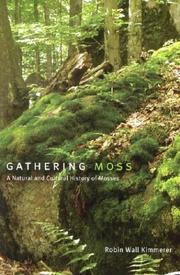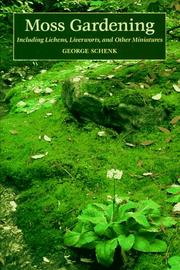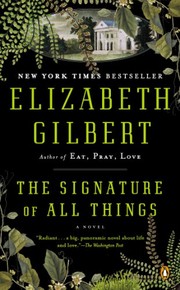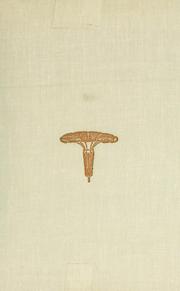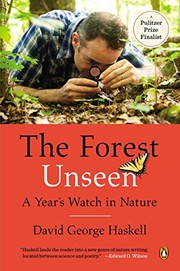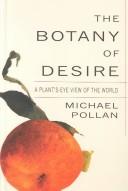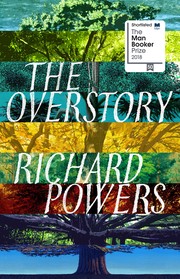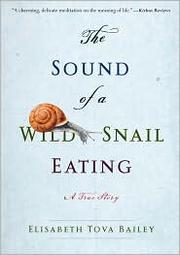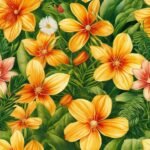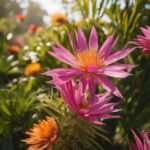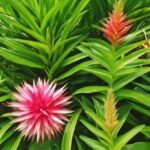Are you a nature enthusiast looking for your next captivating read? Look no further! Dive into the enchanting world of moss with these 20 best books about moss. From stunning photography books to in-depth scientific explorations, these moss books will transport you to the serene and mysterious realm of these tiny but mighty plants. Whether you’re a botany buff, a photography lover, or simply curious about the natural world, there’s a book on moss for everyone. Get ready to be captivated by the beauty and wonder of moss as you explore these top picks!
Contents
- 1 20 Best Moss Books
- 2 Gathering Moss: A Natural and Cultural History of Mosses
- 3 The Hidden Life of Trees: What They Feel, How They Communicate—Discoveries from a Secret World
- 4 Moss Gardening: Including Lichens, Liverworts, and Other Miniatures
- 5 The Signature of All Things
- 6 The Secret Life of Plants
- 7 The Forest Unseen: A Year’s Watch in Nature
- 8 The Botany of Desire: A Plant’s-Eye View of the World
- 9 The Overstory
- 10 The Hidden Forest: The Biography of an Ecosystem
- 11 The Sound of a Wild Snail Eating
- 12 The Plant Messiah: Adventures in Search of the World’s Rarest Species
- 13 The Emerald Planet: How Plants Changed Earth’s History
- 14 The Forest for the Trees: An Editor’s Advice to Writers
- 15 The Triumph of Seeds: How Grains, Nuts, Kernels, Pulses, and Pips Conquered the Plant Kingdom and Shaped Human History
- 16 The Orchid Thief: A True Story of Beauty and Obsession
- 17 The Invention of Nature: Alexander von Humboldt’s New World
- 18 The Hidden Half of Nature: The Microbial Roots of Life and Health
- 19 Life in the Cold: An Introduction to Winter Ecology
- 20 The Man Who Planted Trees: Lost Groves, Champion Trees, and an Urgent Plan to Save the Planet
- 21 The Language of Mosses
- 22 Final Thoughts on Best Moss Books
- 23
20 Best Moss Books
Gathering Moss: A Natural and Cultural History of Mosses
by Robin Wall Kimmerer
Gathering Moss: A Natural and Cultural History of Mosses by Robin Wall Kimmerer is a captivating and insightful exploration of the world of bryophytes. In this enchanting book on moss, Kimmerer shares her deep love and extensive knowledge of these often overlooked and underappreciated plants. Through a combination of scientific expertise and personal reflection, she delves into the fascinating natural history of mosses, shedding light on their ecological importance and unique characteristics.
But Gathering Moss is more than just a book about moss; it also delves into the cultural significance of these ancient plants, exploring the ways in which they have been woven into human history and traditions. Kimmerer’s lyrical prose and profound respect for the natural world make this moss book a truly captivating read, offering readers a new perspective on the beauty and complexity of the tiny plants that carpet our forests and rock faces. Whether you’re a seasoned botanist or simply have a curiosity about the natural world, Gathering Moss is sure to inspire a newfound appreciation for the intricate world of bryophytes.
The Hidden Life of Trees: What They Feel, How They Communicate—Discoveries from a Secret World
by Peter Wohlleben
The Hidden Life of Trees: What They Feel, How They Communicate—Discoveries from a Secret World by Peter Wohlleben is a captivating exploration into the fascinating world of trees. Wohlleben, a forester, shares his deep understanding of the interconnectedness and communication among trees, shedding light on their hidden lives. Through engaging storytelling and scientific insights, Wohlleben reveals how trees communicate, support each other, and even have the ability to feel and respond to their environment.
This book offers a unique perspective on the natural world, uncovering the complex and intricate relationships that trees have with one another and the environment. Wohlleben’s profound observations will leave readers with a newfound appreciation for the intelligence and resilience of trees. Whether you have a passion for nature or simply enjoy learning about the wonders of the natural world, The Hidden Life of Trees is a must-read that will change the way you see the forest.
Moss Gardening: Including Lichens, Liverworts, and Other Miniatures
by George Schenk
Moss Gardening: Including Lichens, Liverworts, and Other Miniatures by George Schenk is a comprehensive guide for anyone interested in cultivating a lush and diverse moss garden. This book on moss explores the fascinating world of mosses, lichens, liverworts, and other miniature plants, offering practical advice on how to create and maintain a beautiful moss garden.
With stunning photographs and detailed descriptions, Schenk introduces readers to the wide variety of moss species and their unique characteristics. From choosing the right moss for your garden to creating suitable growing conditions, this book about moss provides invaluable insights for both beginners and experienced gardeners.
Furthermore, Moss Gardening delves into the ecological significance of mosses and their role in the natural environment, making it a compelling read for nature enthusiasts and conservationists. Whether you’re looking to add a touch of greenery to your outdoor space or simply want to learn more about these fascinating plants, this moss book is an essential addition to any gardening library.
The Signature of All Things
by Elizabeth Gilbert
The Signature of All Things by Elizabeth Gilbert is a captivating novel that delves into the world of botany and the quest for knowledge. The story follows the life of Alma Whittaker, a brilliant and inquisitive botanist who becomes obsessed with the study of plants, including the intricate world of lichen, ferns, and other vegetation. As she explores the wonders of the natural world, she uncovers the hidden secrets and patterns that connect all living things, leading her to a deeper understanding of life, love, and the universe itself.
This mesmerizing tale is not just a book about moss, but it is an exploration of the human spirit, the pursuit of knowledge, and the interconnectedness of all living beings. Gilbert’s rich and evocative prose brings the world of botany to life, immersing readers in the lush and vibrant landscapes of Alma’s discoveries. The Signature of All Things is a thought-provoking and beautifully written moss book that will leave readers spellbound by the wonders of the natural world.
The Secret Life of Plants
by Peter Tompkins and Christopher Bird
The Secret Life of Plants by Peter Tompkins and Christopher Bird is a fascinating exploration of the hidden world of plants. This groundbreaking book delves into the extraordinary abilities of plants, revealing their astonishing sensory and communication capabilities. Through captivating anecdotes and scientific research, the authors shed light on the complex relationships plants have with each other and with the environment. From the ability of plants to detect human emotions to their response to music and other stimuli, this book offers a captivating look at the interconnectedness of all living beings. Whether you have a green thumb or simply a curious mind, The Secret Life of Plants will forever change the way you perceive the natural world. If you’re looking for a thought-provoking read that will deepen your appreciation for the wonders of the plant kingdom, this is the book for you.
The Forest Unseen: A Year’s Watch in Nature
by David George Haskell
The Forest Unseen by David George Haskell is a captivating book that takes readers on a journey through the hidden world of nature, focusing on a small patch of land in the forest. Through the author’s keen observations and insightful reflections, readers are invited to witness the wonders of the natural world and gain a deeper understanding of the interconnectedness of all living things. Haskell’s writing is rich with vivid descriptions and thought-provoking insights, offering a unique perspective on the intricate web of life that surrounds us.
Throughout the book, Haskell delves into the microcosm of the forest, exploring the diverse ecosystem that exists within a single square meter of land. From the tiny creatures that inhabit the forest floor to the intricate patterns of growth and decay, Haskell’s keen eye captures the beauty and complexity of the natural world. This book is a must-read for anyone with an interest in ecology, biology, or simply a love for the outdoors. With its lyrical prose and profound observations, The Forest Unseen is a captivating exploration of the hidden wonders of the natural world.
The Botany of Desire: A Plant’s-Eye View of the World
by Michael Pollan
The Botany of Desire: A Plant’s-Eye View of the World by Michael Pollan is a fascinating exploration of the co-evolutionary relationship between humans and plants. In this thought-provoking book, Pollan delves into the ways in which four specific plants—apples, tulips, cannabis, and potatoes—have shaped human desires and behaviors, and how humans have in turn influenced the evolution and spread of these plants. Through engaging storytelling and insightful analysis, Pollan examines the ways in which plants have manipulated human desires to ensure their own survival, and how humans have manipulated plants to meet their own needs and desires.
This captivating book offers a fresh perspective on the plant world, challenging readers to consider the ways in which plants have influenced human history and society. Whether you’re a plant enthusiast or simply curious about the natural world, The Botany of Desire is sure to provide a thought-provoking and enlightening read that will change the way you think about the plants around you.
The Overstory
by Richard Powers
The Overstory by Richard Powers is a sweeping and ambitious novel that weaves together the lives of nine disparate characters, all of whom are connected by their profound relationship with trees. This epic tale explores the power and interconnectedness of the natural world, as well as the profound impact that trees have on the human experience. Through lyrical prose and richly developed characters, Powers delves into the beauty and complexity of the natural world, inviting readers to consider their own relationship with the environment. The narrative is as intricate and sprawling as the branches of the trees it celebrates, and the novel’s deep reverence for the natural world is palpable on every page. The Overstory is a profound and thought-provoking exploration of the ways in which trees shape our lives and the world around us, and it will leave readers with a newfound appreciation for the majesty of the forests and the intricate ecosystems that they support.
The Hidden Forest: The Biography of an Ecosystem
by Jon R. Luoma
The Hidden Forest: The Biography of an Ecosystem by Jon R. Luoma is a captivating exploration of the intricate and often overlooked world of the forest floor. This immersive book delves into the lives and interactions of the diverse array of flora and fauna that call the forest floor their home, with a particular focus on the often underappreciated mosses.
Luoma’s writing beautifully captures the complex relationships and delicate balance of this hidden ecosystem, shedding light on the vital role that moss plays in the health and sustainability of the forest. Through vivid descriptions and insightful research, he reveals the fascinating interconnectedness of the ecosystem and the remarkable resilience of the tiny mosses that populate it.
Whether you are a nature enthusiast, a scientist, or simply curious about the world beneath our feet, this book about moss is sure to awaken a newfound appreciation for the hidden wonders of the forest floor.
The Sound of a Wild Snail Eating
by Elisabeth Tova Bailey
The Sound of a Wild Snail Eating by Elisabeth Tova Bailey is a captivating and meditative book that explores the author’s experience of being bedridden due to a mysterious illness. Amidst the stillness of her convalescence, Bailey develops a deep fascination with a wild snail that has taken up residence on her bedside table. As she observes the snail’s movements and behaviors, she finds solace and companionship in the tiny creature’s presence. The book is a poignant reflection on the resilience of nature and the interconnectedness of all living beings. Through her intimate observations of the snail, Bailey delves into the world of the miniature, drawing parallels between the snail’s existence and her own. The book is a gentle reminder to slow down, observe the world around us, and find beauty in unexpected places. It’s a captivating and thought-provoking read that will leave you with a newfound appreciation for the natural world.
The Plant Messiah: Adventures in Search of the World’s Rarest Species
by Carlos Magdalena
The Plant Messiah: Adventures in Search of the World’s Rarest Species by Carlos Magdalena is a captivating exploration of the world of rare and endangered plants. Magdalena, also known as the “plant messiah”, takes readers on a thrilling journey through jungles, swamps, and deserts in search of the world’s most elusive plant species. His passion for conservation and botanical expertise shine through as he shares the stories of his encounters with these remarkable plants.
This book is not just a scientific exploration, but also a personal and heartfelt account of Magdalena’s quest to save these endangered plants from extinction. From the breathtaking beauty of orchids to the resilience of cacti, Magdalena’s adventures are filled with excitement, wonder, and a deep respect for the natural world. Whether you’re a plant enthusiast, a conservationist, or simply someone who appreciates a good adventure story, The Plant Messiah is a must-read. It’s a moss book that will leave you in awe of the incredible diversity and importance of plant life on our planet.
The Emerald Planet: How Plants Changed Earth’s History
by David Beerling
The Emerald Planet: How Plants Changed Earth’s History, written by David Beerling, is a fascinating exploration of the role that vegetation has played in shaping the Earth’s history. This thought-provoking book delves into the profound impact that plant life, including mosses, has had on the planet’s climate, atmosphere, and overall ecological balance over millions of years.
Beerling takes readers on a journey through time, showcasing how plants have been instrumental in transforming the Earth’s landscape and atmosphere, and how their influence continues to shape the world we live in today. Through engaging storytelling and scientific insights, the author provides a captivating look at the pivotal role that plant life, including moss, has played in the planet’s history.
Whether you’re a botanist, environmental enthusiast, or simply curious about the natural world, The Emerald Planet offers a compelling and informative exploration of the profound impact that plants, including mosses, have had on Earth’s evolution.
The Forest for the Trees: An Editor’s Advice to Writers
by Betsy Lerner
The Forest for the Trees: An Editor’s Advice to Writers by Betsy Lerner is a guidebook for aspiring writers navigating the daunting world of publishing. Lerner, a former editor turned literary agent, offers a behind-the-scenes look at the writing and editing process, providing invaluable insight and encouragement to writers at all stages of their careers. The book is a treasure trove of wisdom, filled with practical advice, personal anecdotes, and a deep understanding of the writer’s psyche.
Lerner’s writing is like a lush forest, teeming with life and wisdom. As readers venture deeper into the pages, they will find themselves surrounded by the rich and vibrant world of literature, gaining a new perspective on the writing process. Whether you are just starting out on your writing journey or feeling lost in the dense undergrowth of the publishing industry, The Forest for the Trees is the perfect guidebook to help you find your way through the moss-covered paths of the writing world.
The Triumph of Seeds: How Grains, Nuts, Kernels, Pulses, and Pips Conquered the Plant Kingdom and Shaped Human History
by Thor Hanson
The Triumph of Seeds by Thor Hanson is a fascinating exploration of the world of seeds and their profound impact on human history. The book takes readers on a journey through the plant kingdom, delving into the incredible diversity of seeds and their remarkable ability to conquer new environments.
Hanson’s engaging narrative not only delves into the science of seeds, but also examines their role in shaping human civilization. From the development of agriculture to the spread of global trade, seeds have played a pivotal role in human history, and Hanson skillfully weaves together scientific insights and historical anecdotes to illustrate their influence.
Whether discussing the ancient origins of agriculture or the modern-day controversies surrounding genetically modified seeds, Hanson brings a wealth of knowledge and a lively writing style to the subject. This book is a must-read for anyone interested in botany, agriculture, or the fascinating intersection of nature and human culture.
The Orchid Thief: A True Story of Beauty and Obsession
by Susan Orlean
The Orchid Thief by Susan Orlean is a captivating nonfiction book that delves into the world of rare orchids and the eccentric characters who are obsessed with them. The book takes readers on a journey through the swamps of Florida, where the elusive ghost orchid grows. Orlean’s narrative explores the fascinating subculture of orchid collectors and the lengths they will go to in order to obtain these rare and beautiful flowers.
At the heart of the story is John Laroche, a charismatic and enigmatic figure who becomes the central focus of Orlean’s investigation. Laroche’s obsession with orchids leads to a bizarre and ultimately criminal scheme involving the theft of these coveted plants from the wild. As Orlean immerses herself in Laroche’s world, she uncovers a web of passion, deception, and intrigue that ultimately reveals the complexities of human desire and the pursuit of beauty.
The Orchid Thief is a book that will appeal to anyone with an interest in botany, horticulture, or the strange and compelling world of orchid enthusiasts. It’s a mesmerizing exploration of obsession, beauty, and the hidden depths of human nature.
The Invention of Nature: Alexander von Humboldt’s New World
by Andrea Wulf
The Invention of Nature: Alexander von Humboldt’s New World by Andrea Wulf is a captivating biography that explores the life and impact of the visionary naturalist Alexander von Humboldt. Wulf brings to life the adventures and discoveries of this pioneering scientist who revolutionized our understanding of the natural world. Humboldt’s exploration of South America and his groundbreaking observations of the interconnectedness of nature laid the groundwork for modern environmentalism and ecology. Through vivid storytelling and meticulous research, Wulf reveals the profound influence Humboldt had on the likes of Darwin, Thoreau, and Muir, and how his holistic approach to science continues to shape our understanding of the Earth today. This book is not just a biography, but a celebration of the beauty and complexity of the natural world, making it a must-read for anyone with an interest in the environment, exploration, or the history of science.
The Hidden Half of Nature: The Microbial Roots of Life and Health
by David R. Montgomery and Anne Biklé
The Hidden Half of Nature: The Microbial Roots of Life and Health by David R. Montgomery and Anne Biklé is a captivating exploration of the intricate relationship between humans, plants, and the microbial world. Through the authors’ personal experiences and scientific research, the book delves into the vital role that microbes play in maintaining the health of both the natural world and our bodies.
Montgomery and Biklé take readers on a journey through the soil, where they uncover the hidden world of microbes that contribute to the growth of plants and the overall health of the earth. They also delve into the human microbiome, shedding light on the importance of beneficial bacteria in maintaining our health and well-being. The book skillfully weaves together scientific discoveries, personal anecdotes, and historical insights to offer a compelling narrative that highlights the interconnectedness of all living things.
Whether you’re a science enthusiast or simply curious about the hidden world beneath your feet, this book provides a thought-provoking and enlightening exploration of the microbial roots of life and health.
Life in the Cold: An Introduction to Winter Ecology
by Peter J. Marchand
Life in the Cold: An Introduction to Winter Ecology by Peter J. Marchand is a captivating exploration of the natural world during the winter season. Marchand, a renowned ecologist, delves into the wonders of winter ecology, covering topics such as snow, ice, and the remarkable adaptations of plants and animals to survive in the cold. This book provides a fascinating insight into the intricate web of life that thrives in the harsh conditions of winter, offering a deeper understanding of the ecological processes at play.
Marchand’s writing is both informative and engaging, making complex ecological concepts accessible to readers of all backgrounds. Whether you’re a nature enthusiast, a scientist, or simply curious about the natural world, Life in the Cold will open your eyes to the hidden marvels of winter ecology. With vivid descriptions and compelling storytelling, Marchand brings the winter landscape to life, making this book a must-read for anyone interested in the wonders of the natural world.
The Man Who Planted Trees: Lost Groves, Champion Trees, and an Urgent Plan to Save the Planet
by Jim Robbins
The Man Who Planted Trees by Jim Robbins is a captivating exploration of the vital role that trees play in the health of our planet. Robbins takes readers on a journey through ancient forests, lost groves, and the remarkable stories of individuals dedicated to preserving champion trees. Through his engaging storytelling, he showcases the incredible impact that trees have on our environment, from combating climate change to providing essential habitats for diverse species.
With a passionate plea for the urgent need to protect our forests and plant more trees, Robbins presents a compelling case for the crucial role that trees play in sustaining life on Earth. The book on moss also sheds light on the remarkable resilience of trees in the face of environmental challenges, offering hope for the future of our planet.
The Language of Mosses
by Robin Wall Kimmerer
The Language of Mosses by Robin Wall Kimmerer is a captivating exploration of the hidden world of bryophytes, or mosses. Kimmerer, a botanist and member of the Citizen Potawatomi Nation, combines her scientific expertise with indigenous wisdom to offer a unique perspective on these ancient and often overlooked organisms. In this book about moss, she delves into the fascinating ways in which mosses communicate, adapt, and thrive in diverse ecosystems, revealing the intricate and often mysterious language of moss. Through lyrical prose and insightful observations, Kimmerer invites readers to see mosses in a new light, appreciating their resilience and beauty. By weaving together science, storytelling, and personal reflection, she not only educates readers about the ecological importance of mosses, but also encourages a deeper connection with the natural world. Whether you are a nature enthusiast or a science lover, this moss book is sure to leave you with a profound appreciation for the intricate and enchanting world of mosses.
Final Thoughts on Best Moss Books
Exploring the world of Moss through literature can be a fascinating journey. The 20 best books about moss offer a wealth of information, from the scientific to the poetic, inviting readers to appreciate the beauty and importance of this often overlooked plant. Whether you are a nature enthusiast, a botanist, or simply curious about the natural world, these books provide a comprehensive and captivating look at the diverse and enchanting world of moss.
Which book about Moss is best?
The best book on Moss can vary with personal preference, but three widely recommended titles are:
- Gathering Moss: A Natural and Cultural History of Mosses by Robin Wall Kimmerer,
- The Hidden Life of Trees: What They Feel, How They Communicate—Discoveries from a Secret World by Peter Wohlleben,
- Moss Gardening: Including Lichens, Liverworts, and Other Miniatures by George Schenk.
Each offers valuable insights and could be a great starting point.
What are the best books to learn about Moss?
For those looking to learn about Moss, there is a wealth of literature that can provide a comprehensive understanding of the subject. Some of the most highly recommended books include:
- Gathering Moss: A Natural and Cultural History of Mosses by Robin Wall Kimmerer,
- The Hidden Life of Trees: What They Feel, How They Communicate—Discoveries from a Secret World by Peter Wohlleben,
- Moss Gardening: Including Lichens, Liverworts, and Other Miniatures by George Schenk,
- The Signature of All Things by Elizabeth Gilbert,
- The Secret Life of Plants by Peter Tompkins and Christopher Bird,
- The Forest Unseen: A Year’s Watch in Nature by David George Haskell,
- The Botany of Desire: A Plant’s-Eye View of the World by Michael Pollan,
- The Overstory by Richard Powers,
- The Hidden Forest: The Biography of an Ecosystem by Jon R. Luoma,
- The Sound of a Wild Snail Eating by Elisabeth Tova Bailey
These books offer a range of perspectives on Moss, covering various aspects and approaches to the subject.
What are the best books about Moss?
The best books about Moss are:
- Gathering Moss: A Natural and Cultural History of Mosses by Robin Wall Kimmerer,
- The Hidden Life of Trees: What They Feel, How They Communicate—Discoveries from a Secret World by Peter Wohlleben,
- The Plant Messiah: Adventures in Search of the World’s Rarest Species by Carlos Magdalena,
- The Emerald Planet: How Plants Changed Earth’s History by David Beerling,
- The Overstory by Richard Powers,
- The Forest Unseen: A Year’s Watch in Nature by David George Haskell.
Each offers unique insights into the subject. While these books about Moss are highly regarded, it’s important to note that any list of ‘best’ books is subjective and reflects a range of opinions.
What are the best Moss books of all time?
Choosing the best Moss books of all time can vary depending on who you ask, but five titles that are often celebrated include
- Gathering Moss: A Natural and Cultural History of Mosses by Robin Wall Kimmerer,
- The Hidden Life of Trees: What They Feel, How They Communicate—Discoveries from a Secret World by Peter Wohlleben,
- The Secret Life of Plants by Peter Tompkins and Christopher Bird,
- The Overstory by Richard Powers,
- and The Plant Messiah: Adventures in Search of the World’s Rarest Species by Carlos Magdalena.
Each of these books has made a significant impact in the field of Moss and continues to be influential today.

